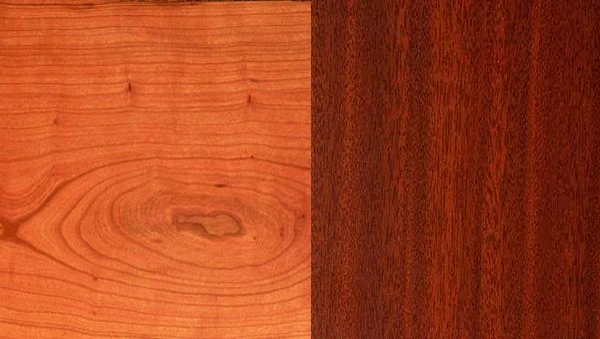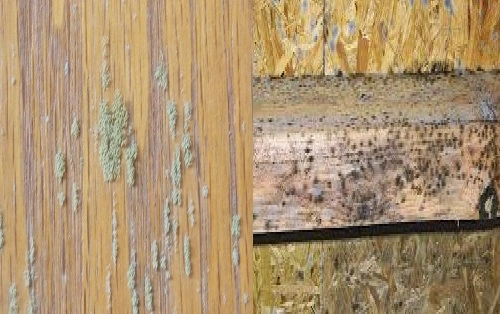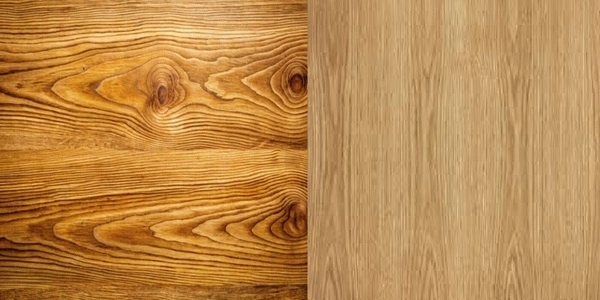When it comes to selecting premium wood for furniture, cabinetry, and other home design elements, cherry wood and mahogany are two highly regarded options. Both woods are prized for their beauty, durability, and versatility, but they differ in terms of appearance, properties, cost, and applications. Knowing the differences between these two hardwoods can help you make the right choice for your project.
In this article, we’ll compare cherry wood and mahogany, highlighting their key characteristics, advantages, drawbacks, and ideal uses.
What is Cherry Wood?
Cherry wood comes from the American black cherry tree, which is native to North America. It’s a versatile hardwood with a fine, smooth grain and a rich, warm color that deepens with age.
Key Characteristics of Cherry Wood:
1. Appearance: Cherry wood has a light pinkish-brown hue that darkens over time to a rich reddish-brown. It has a smooth, straight grain with occasional waves and small knots.
2. Workability: Cherry wood is easy to work with, making it a favorite among woodworkers for carving, cutting, and finishing.
3. Durability:Although not as hard as some other hardwoods, cherry wood is strong, moderately durable, and resistant to warping.
4. Aging:One of cherry wood’s most prized characteristics is its ability to develop a beautiful patina over time.
What is Mahogany?
Mahogany refers to several species of hardwood trees native to Central and South America, Africa, and Asia. True mahogany, often called Honduran mahogany, is highly valued for its beauty and longevity.
Key Characteristics of Mahogany:
1. Appearance: Mahogany has a uniform reddish-brown to deep red hue with a straight, fine, and even grain. It often exhibits a subtle shimmer or “chatoyance” when polished.
2. Workability:Mahogany is a dream to work with due to its uniform texture and ability to hold fine details.
3. Durability: Mahogany is exceptionally strong, durable, and resistant to rot, making it ideal for both indoor and outdoor use.
4. Exotic Appeal: Its luxurious appearance and association with high-end furniture make mahogany a status symbol.
Comparison of Cherry Wood and Mahogany
| Feature | Cherry Wood | Mahogany |
|---|---|---|
| Color | Light pinkish-brown, darkens to reddish-brown | Deep reddish-brown to dark red |
| Grain | Straight, smooth, with occasional knots | Straight, fine, even, with subtle shimmer |
| Durability | Moderately durable, prone to dents | Highly durable, resistant to rot and pests |
| Workability | Easy to cut, carve, and finish | Excellent for intricate work |
| Aging | Develops a warm, rich patina over time | Retains its deep color with minimal fading |
| Cost | Mid-range | Expensive |
| Sustainability | Widely available, sustainably harvested | Limited availability, some species endangered |
| Common Uses | Furniture, cabinetry, flooring, décor | Luxury furniture, musical instruments, boats |
Advantages of Cherry Wood
1. Natural Warmth: The warm tones and fine grain of cherry wood create a cozy and inviting atmosphere, making it a favorite for traditional and modern interiors.
2. Affordability: Cherry wood is more affordable than mahogany, offering a high-end look at a mid-range price.
3. Versatility: Cherry wood works well for a variety of applications, including furniture, cabinetry, flooring, and decorative items.
4. Aging Gracefully: Its ability to develop a rich patina over time enhances its natural beauty.
Drawbacks of Cherry Wood:
1. Softness: Cherry wood is softer than mahogany and can be prone to dents and scratches.
2. Color Variability: The initial lighter tone may take years to darken, which might not suit projects requiring consistent coloration.
Advantages of Mahogany
1. Timeless Elegance: Mahogany’s deep, rich color and fine grain lend a luxurious, classic look to furniture and design pieces.
2. Exceptional Durability: Mahogany is highly resistant to rot, pests, and environmental damage, making it suitable for heirloom-quality furniture and outdoor use.
3. Workability: Its uniform grain allows for detailed carving and polishing, making it a favorite for intricate designs.
4. Exotic Appeal: The rarity and history of mahogany make it a symbol of sophistication and prestige.
Drawbacks of Mahogany:
1. High Cost:
Mahogany is significantly more expensive than cherry wood, which can make it cost-prohibitive for large projects.
2. Sustainability Concerns:
Overharvesting has led to a decline in the availability of true mahogany, with some species now protected under international regulations.
Ideal Uses for Cherry Wood
1. Furniture: Cherry wood is perfect for crafting tables, chairs, bed frames, and cabinets due to its warmth and smooth finish.
2. Cabinetry: Its ability to develop a patina makes cherry wood a popular choice for kitchen and bathroom cabinets.
3. Decorative Items: Cherry wood’s grain pattern and rich color make it ideal for decorative wall panels, picture frames, and small home accents.
Ideal Uses for Mahogany
1. Luxury Furniture: Mahogany is the wood of choice for high-end furniture, including desks, dining tables, and display cabinets.
2. Musical Instruments: Its tonal properties make mahogany a favorite for guitars, pianos, and other instruments.
3. Boats and Outdoor Projects: Thanks to its resistance to rot and water, mahogany is often used in boatbuilding and luxury outdoor furniture.
Which Should You Choose?
Your choice between cherry wood and mahogany will depend on your project needs, budget, and aesthetic preferences:
1. Choose Cherry Wood If:
- You want an affordable yet premium hardwood for furniture and cabinetry.
- You appreciate wood that ages gracefully and develops a warm patina.
- You’re looking for a versatile option suitable for various styles, from traditional to contemporary.
2. Choose Mahogany If:
- You’re willing to invest in a high-end, durable wood for heirloom-quality furniture or outdoor applications.
- You prefer a uniform, deep reddish-brown hue that retains its color over time.
- You’re creating a statement piece or intricate design that requires exceptional workability.
Conclusion
Both cherry wood and mahogany are excellent choices for furniture and home design, but they cater to different priorities. Cherry wood offers natural warmth, affordability, and versatility, making it perfect for homeowners looking for a timeless yet budget-friendly option. Mahogany, with its unmatched elegance, durability, and exotic appeal, is the go-to choice for luxury and long-lasting projects.
By understanding the characteristics and uses of each wood, you can select the perfect material to suit your style, functionality, and budget, ensuring your furniture and home designs remain beautiful and durable for years to come.


